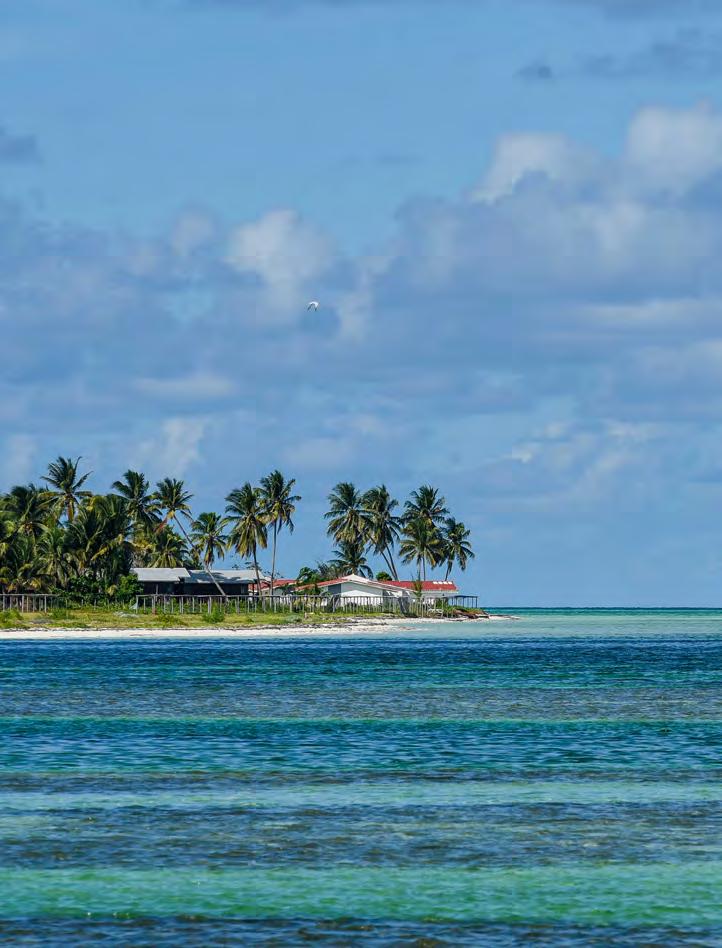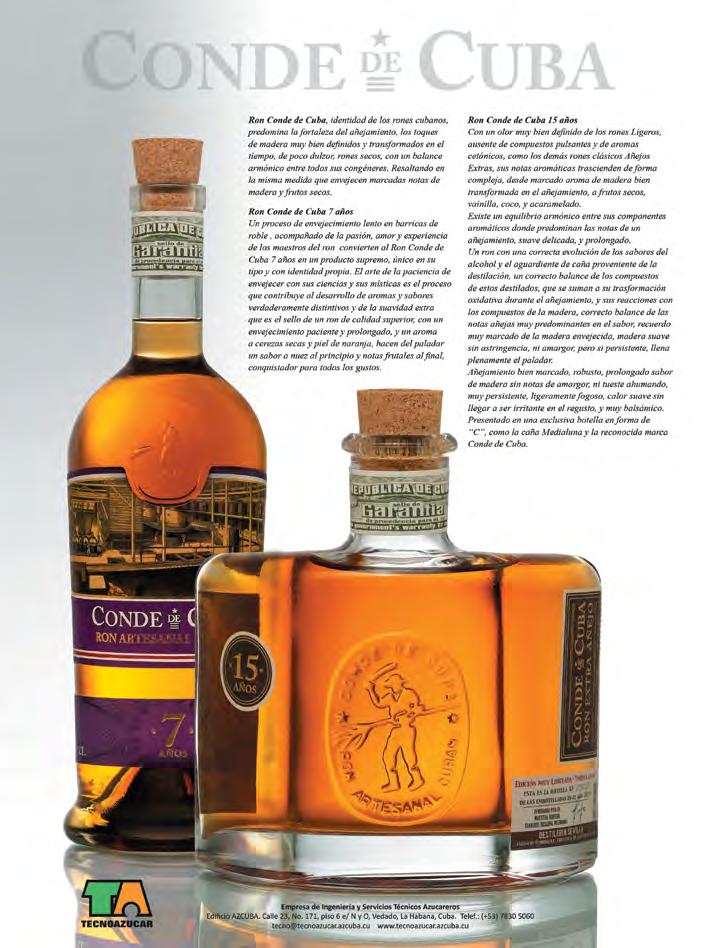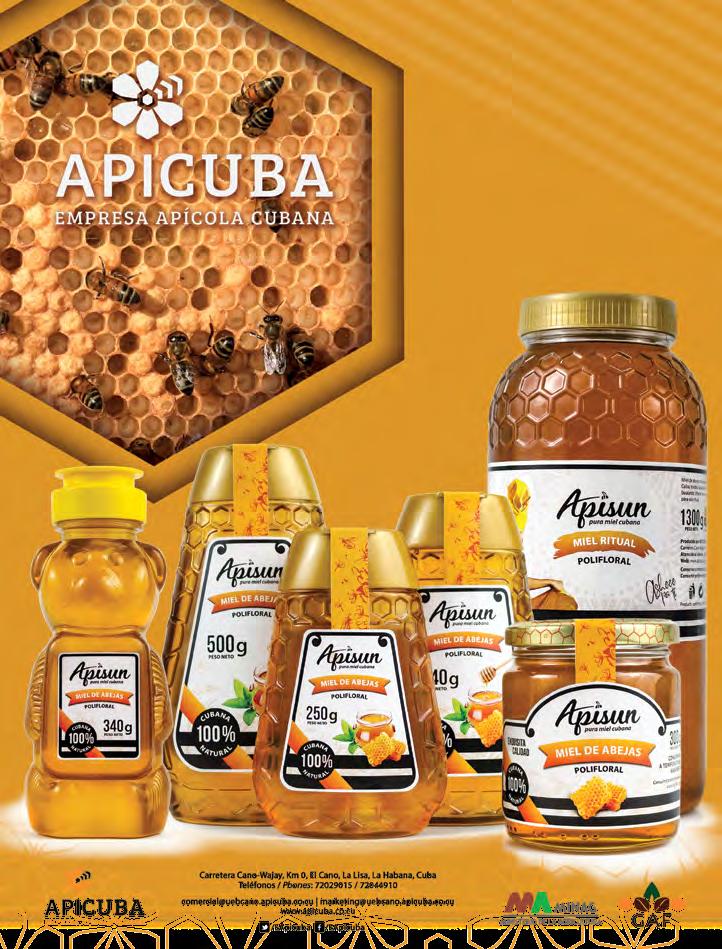
21 minute read
REPORTAJE 18 REPORTAJE
reportaje
DESCUBRIENDO LA PLAZA VIEJA
DE LA HABANA
Textos y fotos/Texts and photos: Bienvenidos
Ecléctica y llena de vida, en el centro histórico habanero, La Plaza Vieja regala a los visitantes una experiencia que sorprende, satisface y eleva los sentidos. Diseñada en el año 1559 y catalogada en aquel entonces como Plaza Nueva, fue escenario de pregones, celebraciones y mercados. Hoy es espacio de encuentro y sede de tiendas, restaurantes, cafés, bares, casas de hospedaje y lugares de interés turístico. Reúne sitios que, en su variedad, hacen del paseo, un auténtico descubrimiento. En este sentido, resalta la Cámara Oscura, situada en una maravillosa y elevada construcción, en una de las esquinas de la plaza. Desde las alturas, invita a los curiosos a un extraordinario recorrido guiado por la parte antigua de la ciudad y su historia, mediante un dispositivo óptico que, en tiempo real, permite apreciar las más impresionantes vistas reflejadas en una gran pantalla cóncava.
Discovering Havana's Plaza Vieja
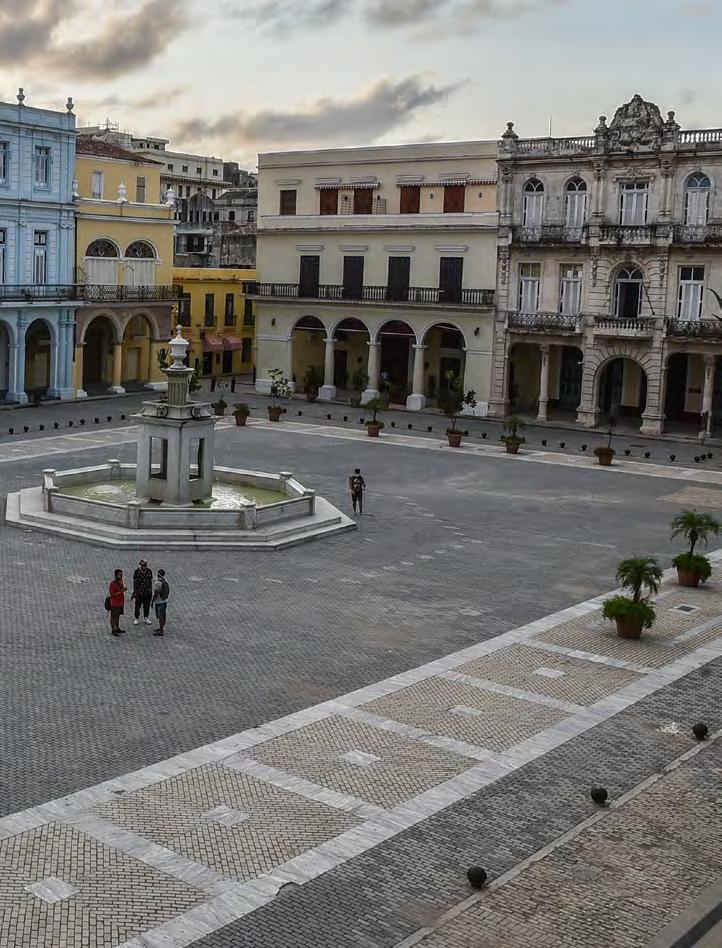
Eclectic and full of life, in Havana's historic center, Plaza Vieja offers visitors an experience that surprises, satisfies and elevates the senses. Designed in 1559 and catalogued at that time as Plaza Nueva (New Square), it was the stage for street vendors, celebrations and markets. Today it is a meeting place and home to stores, restaurants, cafes, bars, lodging houses and tourist attractions. It gathers sites that, in their variety, make the visit an authentic discovery. In this sense, the Camera Obscura stands out, located in a wonderful and elevated construction, in one of the corners of the square. From the heights, it invites the curious to an extraordinary guided tour through the old part of the city and its history, through an optical device that, in real time, allows to appreciate the most impressive views reflected on a large concave screen.
Asimismo, un Planetario promete un espectacular e instructivo viaje al cosmos en 45 minutos. El sistema solar reconstruido con los planetas a escala, millones de estrellas y el descubrimiento del universo desde su génesis, se fusionan en un espectáculo que impacta y estremece ante la imperante cercanía a un infinito espacio estelar, en constante movimiento. Para los amantes del buen café, “El Escorial” deleita con una amplia variedad de esta infusión. Aquí la combinación del seductor aroma, su intenso sabor en consonancia con los diversos ingredientes a gusto del consumidor y el armónico ambiente del popular sitio, lo convierten en una estancia obligada para disfrutar del adictivo y revitalizador cafecito cubano. De igual forma, exquisita comida de varias partes del mundo, así como refrescantes bebidas aguardan a quienes la recorren, pues podrán disfrutar de las distintas ofertas desde acogedores espacios interiores, pintorescos balcones o mesas al aire libre. Gran parte de la magia de esta locación, emana de los grupos de personas que la toman como motivo de intercambio. Visitantes, en la más amplia heterogeneidad, se congregan en los diferentes puntos para disfrutar, entre extensa charlas y risas, de la buena gastronomía. Llegar y encontrarse esta peculiar escena, dibuja una inevitable sonrisa y es una inyección de felicidad para el alma. Si de arte culinario se trata, destaca La Vitrola, con un excelente servicio y deliciosos platos de la cocina cubana e internacional. El restaurante, musicalísimo y con su atractiva decoración estilo vintage, promete un acogedor entorno de vitrolas, bicicletas, paredes colmadas de imágenes y letreros que evocan tiempos pasados.
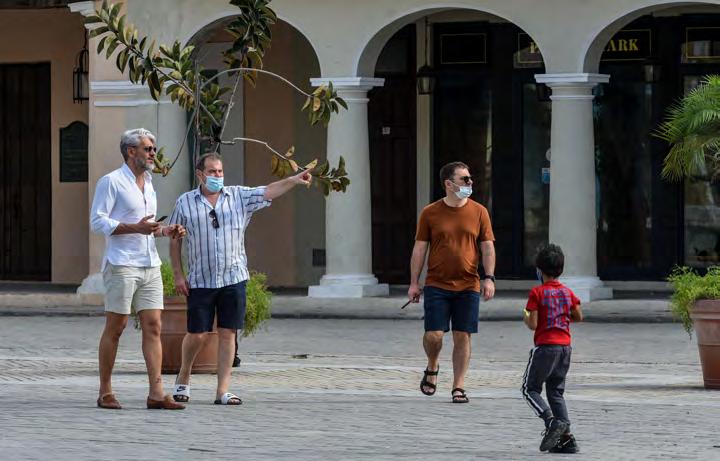
In addition, a Planetarium promises a spectacular and instructive journey into the cosmos in 45 minutes. The solar system reconstructed with the planets to scale, millions of stars and the discovery of the universe from its genesis, merge in a show that shocks and thrills at the prevailing proximity to an infinite stellar space in constant motion. For lovers of good coffee, "El Escorial" delights with a wide variety of this beverage. Here the combination of the seductive aroma, its intense flavor in harmony with the diverse ingredients to the taste of the consumer and the harmonious ambience of the popular place, make it a must to enjoy the addictive and revitalizing Cuban coffee. Likewise, exquisite food from various parts of the world, as well as refreshing drinks await those who visit it, as they can enjoy the different offers from cozy indoor spaces, picturesque balconies or outdoor cafes. Much of the magic of this location, emanates from the groups of people who take it as a reason for exchange. Visitors, in the widest heterogeneity, congregate in the different points to enjoy, between extensive chats and laughter, of the good gastronomy. Arriving and finding this peculiar scene, draws an inevitable smile and is an injection of happiness for the soul. When it comes to culinary art, La Vitrola stands out, with excellent service and delicious dishes of Cuban and international cuisine. The restaurant, very musical and with its attractive vintage-style décor, promises a cozy environment of stainedglass windows, bicycles, walls full of images and signs that evoke past times.
Por su parte, una factoría de maltas y cervezas constituye la excusa ideal para hacer una parada y refrescar del caluroso clima de la isla caribeña. La singularidad de estos productos artesanales son una caricia al paladar, tanto desde el interior del local como en su espacio abierto vivenciando el acontecer de la plaza. El contacto directo con la cultura y la historia tiene lugar, igualmente, en esta vetusta zona. La Fototeca de Cuba, por ejemplo, posee un importante patrimonio fotográfico cubano e internacional de más de 170 años que muestra, mediante las exposiciones en sus galerías, emblemáticos momentos de los siglos XIX y XX. El Museo de Naipes es otro fascinante paseo por el pasado, esta vez contado por las colecciones de barajas, naipes y postales que desde lustrosos estantes reflejan el arte y las costumbres de los pueblos que le dieron origen. El Centro de Arte La Casona, con su encanto antiquísimo y colonial, revela en sus galerías, lo mejor de las artes plásticas del país y sus principales artífices. Imponentes esculturas embellecen el área y se tornan epicentro de admiración y cómplices de disímiles fotografías. En mitad de la plaza, se erige una monumental fuente del blanco y vistoso mármol de carrara, reconstruida a semejanza de la instituida en piedra en el siglo XVIII. La mezcla de su belleza con el entramado de luces y la caída del agua, cautiva a los transeúntes. Destaca a su vez, la singular obra en bronce del Premio Nacional de Artes Plásticas, Roberto Fabelo, que muestra una mujer encima de un gallo, portando un tenedor como lanza. Asimismo, la pieza escultórica “Natura”, de Juan Quintanilla, hermosa y colosal flor confeccionada en mármol y acero inoxidable que, en su forma tridimensional, alcanza casi 10 metros de altura.
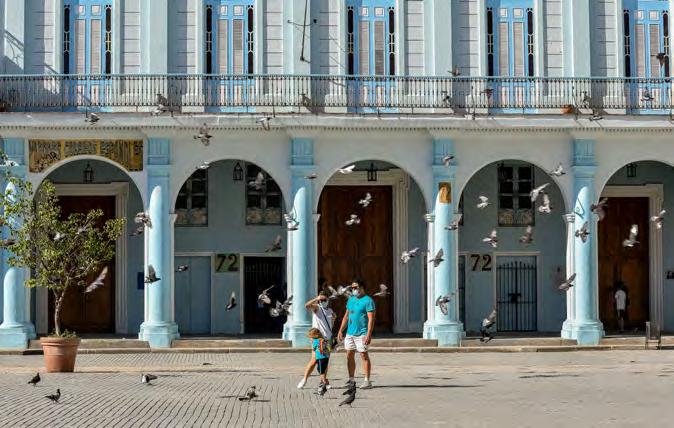
For its part, a malt and beer factory is the ideal excuse to make a stop and cool off from the hot weather of the Caribbean island. The uniqueness of these handcrafted products is a caress to the palate, both from inside the premises and in its open space experiencing the events of the square. Direct contact with culture and history also takes place in this old area. The Photography Library of Cuba, for example, has an important Cuban and international photographic heritage of more than 170 years that shows, through exhibitions in its galleries, emblematic moments of the nineteenth and twentieth centuries. The Playing Cards Museum is another fascinating walk through the past, this time told by the collections of decks of cards and postcards that reflect the art and customs of the people who gave birth to them from glossy shelves. La Casona Art Center, with its ancient and colonial charm, reveals in its galleries, the best of the plastic arts of the country and its main artists. Imposing sculptures embellish the area and become the epicenter of admiration and accomplices of dissimilar photographs. In the middle of the square, stands a monumental fountain of white carrara marble, rebuilt in the likeness of the one built in stone in the eighteenth century. The mixture of its beauty with the network of lights and the fall of the water, captivates the passers-by. The singular bronze work of Roberto Fabelo, winner of the National Plastic Arts Award, which shows a woman on top of a rooster, carrying a fork as a spear, also stands out. Also, the sculptural piece "Natura", by Juan Quintanilla, a beautiful and colossal flower made of marble and stainless steel that, in its three-dimensional form, reaches almost 10 meters in height.
La Plaza Vieja acoge construcciones que datan de los siglos XVII, XVIII, XIX e inicios del XX. Su belleza arquitectónica revela curiosas historias, apreciarla resulta impactante, dada la confluencia del Barroco cubano con el Art Nouveau y el Modernismo, este último proveniente de las restauraciones a lo largo de los años. Andar sobre sus adoquines de piedra es una evocación a siglos pasados, que despierta la sensación de pasear en una leyenda. En el llamativo y colorido paraje, no faltan nunca la música y las risas. Niños, parejas, familias y aquellos que apuestan por los paseos en solitario, encuentran aquí un entorno mágico de disfrute y desconexión. El recorrido suele tornarse insospechado, es común toparse con demostraciones de practicantes de capoeira, tarotistas que develan el futuro, creativos pregoneros o la oportunidad de lucir estilosas trenzas en el cabello. El encanto de su historicidad es irresistible. La calidez de la luz cuando atardece junto a la alegría del enclave y el sonido del agua desde su majestuosa fuente, fascina a los viajeros. Visitar el enigmático y seductor espacio es sinónimo de encantamiento imperecedero y sensaciones inolvidables. La experiencia supone, sin dudas, el fuerte deseo de querer regresar.
The Plaza Vieja is home to buildings dating from the seventeenth, eighteenth, nineteenth and early twentieth centuries. Its architectural beauty reveals curious stories; appreciating it is impressive, given the confluence of Cuban Baroque with Art Nouveau and Modernism, the latter coming from restorations over the years. Walking on its stone cobblestones is an evocation of past centuries, which awakens the sensation of walking in a legend. In this striking and colorful place, music and laughter are never lacking. Children, couples, families and those who prefer to walk alone, find here a magical environment of enjoyment and disconnection. The tour often becomes unsuspected, it is common to come across demonstrations of capoeira practitioners, tarot readers who reveal the future, creative street vendors or the opportunity to wear stylish braids in your hair. The charm of its historicity is irresistible. The warmth of the light at dusk, the joy of the enclave and the sound of water from its majestic fountain, fascinates travelers. Visiting the enigmatic and seductive space is synonymous with everlasting enchantment and unforgettable sensations. The experience undoubtedly implies a strong desire to return.
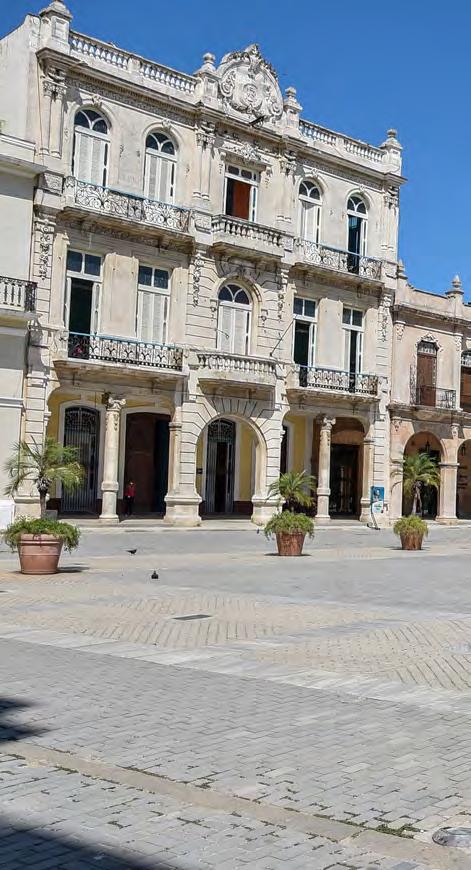
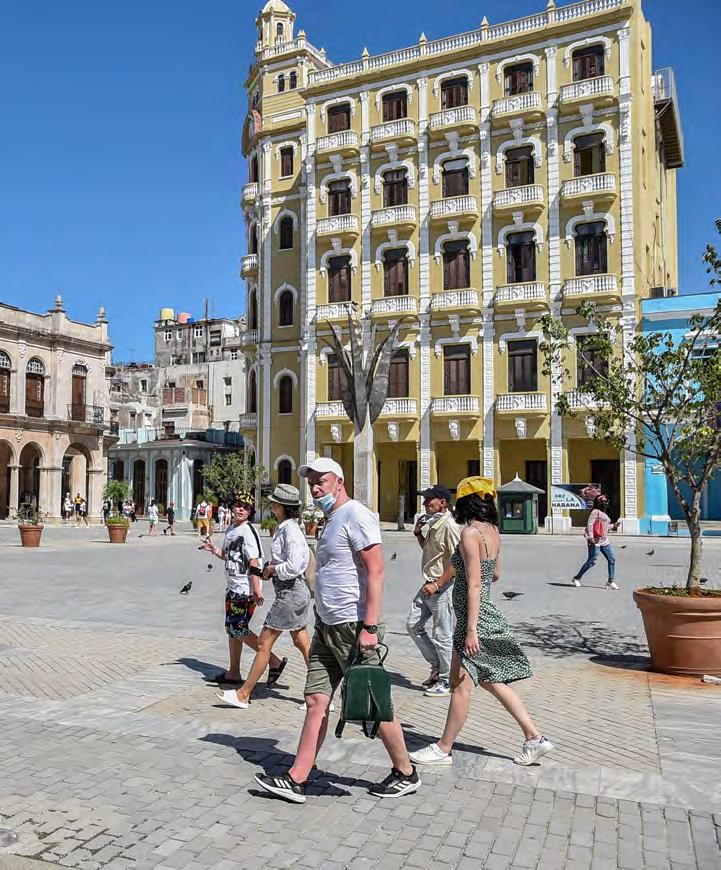
CAYERÍA DE CIEGO DE ÁVILA PARAISOS AL NORTE Y « AL SUR»
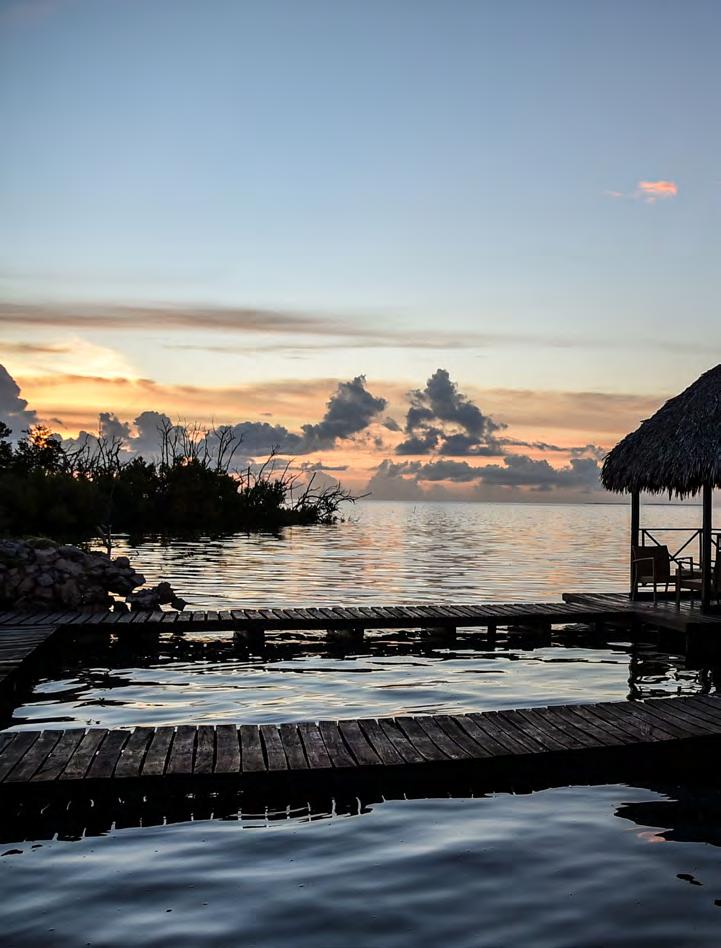
Desde las costas de la provincia Ciego de Ávila, archipiélagos de ensueño regalan a los visitantes una de las más asombrosas experiencias de la isla antillana. Al norte Jardines del Rey, y al sur, Jardines de la Reina, son una suerte de magia tropical convertida en impresionantes playas turquesa, arenas blancas y una exuberante naturaleza.
Jardines del Rey
Bañados por el océano Atlántico, se posiciona como la más extensa cayería que circunda la isla de Cuba, con 465 kilómetros e integrado por más de 2500 islas e islotes. El acceso a estos parajes, puede ser por aire o por el asombroso pedraplén de 17 kilómetros que conecta el municipio avileño de Morón con Cayo Coco, ínsula que, junto a Cayo Guillermo, constituye uno de los principales enclaves de este archipiélago, conformado por otros como Antón Chico y Cayo Paredón.
From the coasts of the province of Ciego de Avila, dreamlike archipelagos offer visitors one of the most amazing experiences of the Antillean island. To the north, Jardines del Rey (King's Gardens), and to the south, Jardines de la Reina (Queen's Gardens), are a sort of tropical magic turned into impressive turquoise beaches, white sands and exuberant nature.
Jardines del Rey (King's Gardens)
Bathed by the Atlantic Ocean, it is the most extensive key that surrounds the island of Cuba, with 465 kilometers and composed of more than 2,500 islands and islets. Access to these places can be by air or by the amazing 17-kilometer-long causeway that connects the municipality of Morón with Cayo Coco, an island that, together with Cayo Guillermo, is one of the main enclaves of this archipelago, made up by others such as Antón Chico and Cayo Paredón.
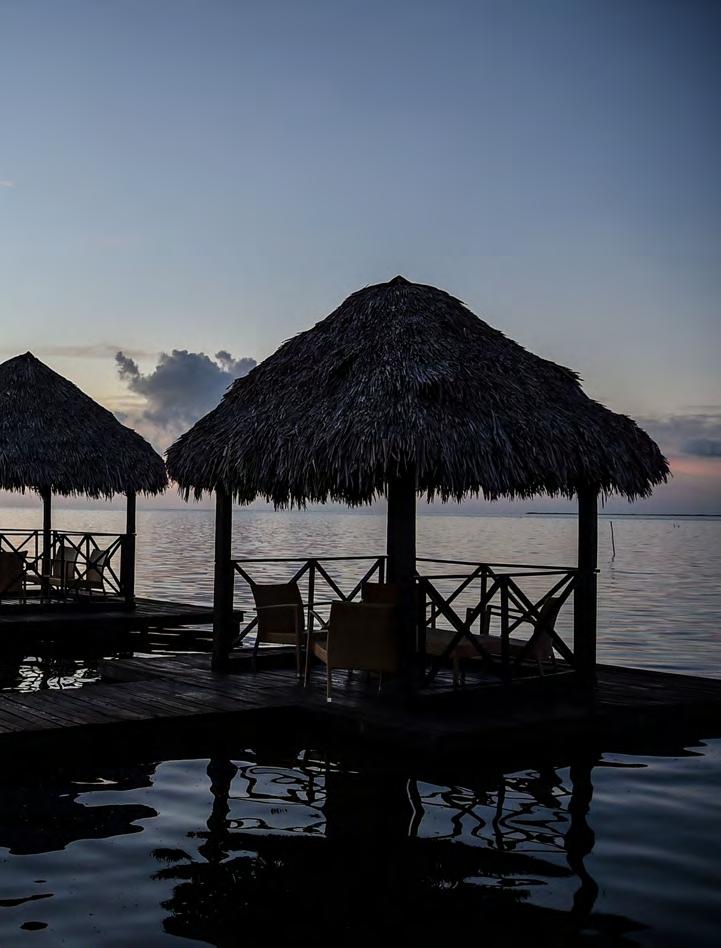
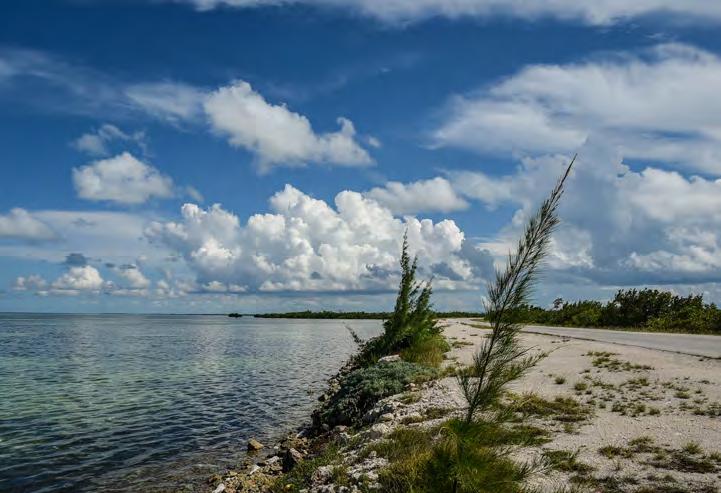
En su conjunto, son una maravilla que cautiva con alrededor de 40 kilómetros de las más espectaculares playas casi inexploradas, de aguas cálidas, cristalinas y poco profundas. Un verdadero paraíso que seduce, ideal para refrescantes baños o descansos reparadores bajo la sombra de los cocoteros, apreciando el mar en su inmensidad. Sobre su extrema belleza, cuenta el destacado novelista Ernest Hemingway en su libro, “Islas en el Golfo”. Se considera un destino de sol y playa por excelencia, al que se suman colosales dunas de arena que alcanzan hasta quince metros, y para asegurar el confort durante la estadía, una red de confortables hoteles todo incluido que ostentan categorías de cuatro y cinco estrellas. Sin embargo, su imponente atractivo natural es también, motivo de preferencia para los amantes del turismo de naturaleza y sus modalidades. Entre los principales encantos, sobresale una grandiosa barrera coralina de 400 kilómetros que se distingue por ser una de las mayores del Caribe. Esta será, indudablemente, una de las más perdurables vivencias de los visitantes: descubrir este paraíso subacuático en el que se fusionan belleza inigualable y diversidad de especies, sumado a su importante rol en la protección de las costas. A lo largo del litoral, amantes del buceo y el snorkeling encontrarán lo extraordinario en treinta puntos magníficos para la inmersión. La gran variedad de peces que habita por estos lares, le confieren un entramado de colores llamativos, en complicidad con el impresionante fondo marino, protagonizado por corales de formas diversas y bellas plantas marinas. Por su parte, la biodiversidad de Jardines del Rey, le añade un halo de sorpresa y fascinación. Flora y fauna enamoran a los vacacionistas por su riqueza, singularidad y alto grado de endemismo. La vegetación cubre más del 90% del área, construyendo un paradisíaco paisaje, complementado con una inmensa variedad de plantas que colman al lugar de un especial colorido y misticismo. Flores, bosques y manglares esperan a aquellos deseosos de emocionarse al apreciar la hermosura natural en su máxima expresión. Asimismo, posee una variada fauna en la que sobresalen las aves, con más de 200 especies. En este sentido, resalta una de las mayores colonias de flamencos rosados de la zona que, con su inherente esbeltez y tonalidad, dan la bienvenida y embellecen el espacio. Se suman a la variedad del entorno, curiosos moluscos, reptiles y una abundante cantidad de peces. Dos maravillosas lagunas distinguen la cayería: la Redonda, cristalina y rodeada de un notorio verdor; y la de La Leche, la más grande del país, con su característica tonalidad blanquecina por el yeso y las partículas de roca caliza que alberga en el fondo. Ambas integran un humedal designado sitio Ramsar. La convergencia de estos incomparables recursos supone la promesa de experimentar una emocionante conexión con la naturaleza. De ahí el placer de practicar las distintas modalidades turísticas que la toman como escenario. El senderismo, por ejemplo, eleva los sentidos en el tránsito por entornos poco explorados que acogen insólitos paisajes. La observación de aves y de vida silvestre, son otras de las prácticas que encantan, dada la oportunidad de estar en contacto y apreciar la amplísima variedad zoológica del enclave, y para los que prefieren la fotografía, la posibilidad de capturarlos con el lente.
As a whole, they are a marvel that captivates with about 40 kilometers of the most spectacular, almost unexplored beaches, with warm, crystal-clear and shallow waters. A true paradise that seduces, ideal for refreshing baths or restful breaks under the shade of coconut trees, appreciating the sea in its immensity. About its extreme beauty, the outstanding novelist Ernest Hemingway tells in his book, "Islands in the Gulf". It is considered a sun and beach destination par excellence, to which are added colossal sand dunes that reach up to fifteen meters, and to ensure comfort during the stay, a network of comfortable all-inclusive hotels that boast categories of four and five stars. However, its imposing natural attraction is also a reason of preference for lovers of nature tourism and its modalities. Among the main attractions is a 400-kilometerlong coral reef that stands out for being one of the largest in the Caribbean. This will undoubtedly be one of the most lasting experiences for visitors: discovering this underwater paradise where unparalleled beauty and diversity of species merge, in addition to its important role in the protection of the coasts. Along the coast, diving and snorkeling enthusiasts will discover the extraordinary in thirty magnificent dive sites. The great variety of fish that inhabit these shores, confer a mesh of striking colors, in complicity with the impressive seabed, starring corals of various shapes and beautiful marine plants. The biodiversity of Jardines del Rey, adds a sense of surprise and fascination. Flora and fauna enchant vacationers with their richness, uniqueness and high degree of endemism. The vegetation covers more than 90% of the area, building a paradisiacal landscape, complemented by an immense variety of plants that fill the place with a special color and mysticism. Flowers, forests and mangroves await those who wish to be thrilled by appreciating the natural beauty in its maximum expression. It also has a varied fauna in which birds stand out, with more than 200 species. In this sense, one of the largest colonies of pink flamingos in the area stands out, with its inherent slenderness and tonality, welcoming and beautifying the space. In addition to the variety of the environment, there are curious mollusks, reptiles and an abundant quantity of fish. Two marvelous lagoons distinguish the key: La Redonda, crystalline and surrounded by a notorious greenness; and La Leche, the biggest in the country, with its characteristic whitish tonality due to the gypsum and the particles of limestone rock it contains at the bottom. Both are part of a wetland designated as a Ramsar site. The convergence of these incomparable resources holds the promise of experiencing an exciting connection with nature. Hence the pleasure of practicing the various forms of tourism that take it as a backdrop. Hiking, for example, heightens the senses in the transit through little explored environments that host unusual landscapes. Bird watching and wildlife observation are other delightful practices, given the opportunity to be in contact and appreciate the wide zoological variety of the enclave, and for those who prefer photography, the possibility of capturing them with the lens.
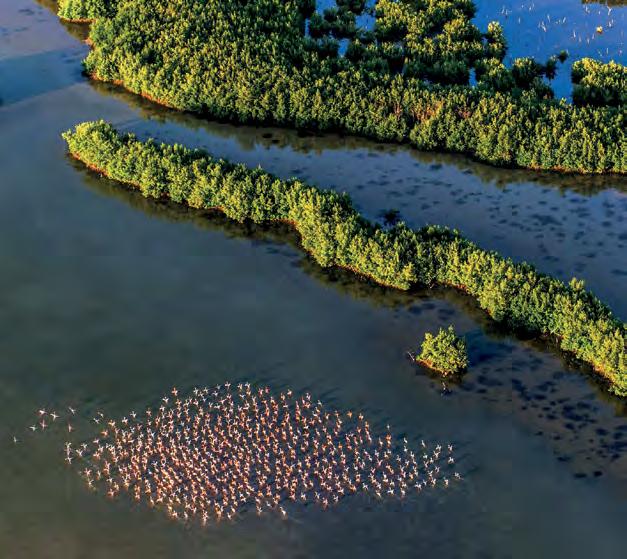
De igual forma, el buceo contemplativo, el snorkeling, la pesca deportiva y los deportes náuticos en su pluralidad, permiten dar rienda suelta a la adrenalina, la aventura o la observación en este irresistible universo marino. Más allá de estas riquezas, impresiona el alto nivel de conservación, que ha dotado a diferentes áreas de categorías como Reserva de la Biosfera Buenavista, Reserva Ecológica, Refugio de Fauna y Reserva Florística Manejada. De esta forma, se despliegan acciones para la protección y sostenibilidad del medio ambiente.
Likewise, contemplative diving, snorkeling, sport fishing and nautical sports in their plurality, allow you to give free rein to adrenaline, adventure or observation in this irresistible marine universe. Beyond these riches, the high level of conservation is impressive, which has endowed different areas with categories such as Buenavista Biosphere Reserve, Ecological Reserve, Fauna Refuge and Managed Floristic Reserve. In this way, actions are deployed for the protection and sustainability of the environment.
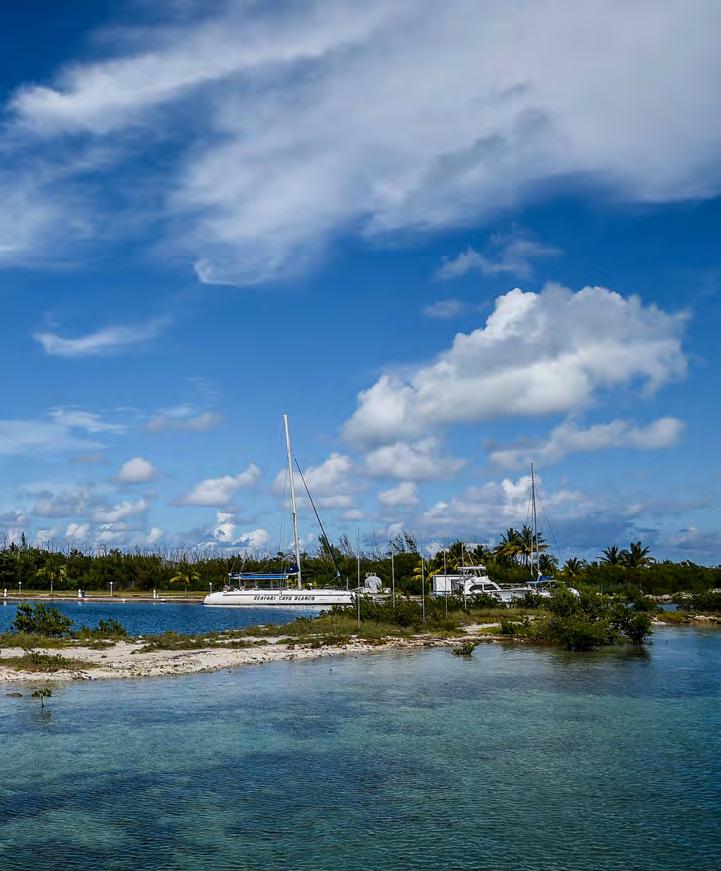
Jardines de la Reina
Las costas meridionales de la provincia avileña, recrean la cayería más aislada y mejor conservada del país: Jardines de la Reina, con un parque natural del mismo nombre. Insólito paraíso submarino que sorprende y encanta con su gran belleza y la multiplicidad de la flora y la fauna endémica que acoge. Conformado por 3 cayerías que agrupan 661 cayos, se extiende hasta territorio camagüeyano. Aquí la confluencia de manglares, pequeñas dunas de arena y espesa vegetación, dotan al paisaje de especial singularidad. No obstante, el verdadero paraíso lo esconde sus majestuosas aguas verde-azuladas. Ofrece una experiencia sin igual, en excepcionales fondos marinos donde están representados casi todos los hábitats propios del Caribe. Impactan sus ecosistemas caracterizados por la amplia biodiversidad, en los que se incluyen peces, tortugas y crustáceos de importante valor ambiental que deslumbran por su belleza y peculiaridades.
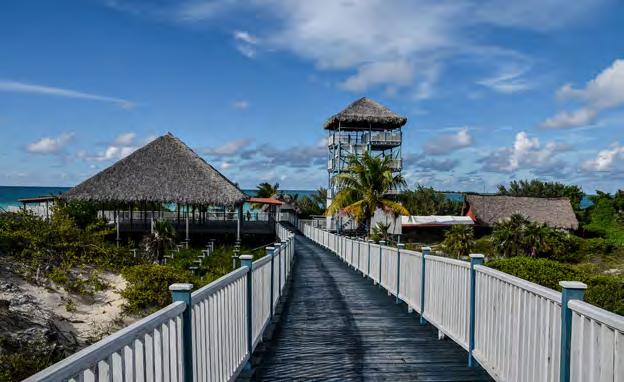
Jardines de la Reina (Queen's Gardens)
The southern coasts of the province of Avila recreate the most isolated and best preserved keys of the country: Jardines de la Reina, with a natural park of the same name. An unusual underwater paradise that surprises and enchants with its great beauty and the multiplicity of its endemic flora and fauna. Made up of 3 keys that group 661 islets, it extends to Camagüey's territory. Here, the confluence of mangrove swamps, small sand dunes and thick vegetation give the landscape a special singularity. However, the real paradise is hidden in its majestic blue-green waters. It offers an unparalleled experience, in exceptional seabed where almost all the habitats of the Caribbean are represented. Its ecosystems are characterized by a wide biodiversity, including fish, turtles and crustaceans of important environmental value that dazzle for their beauty and peculiarities.
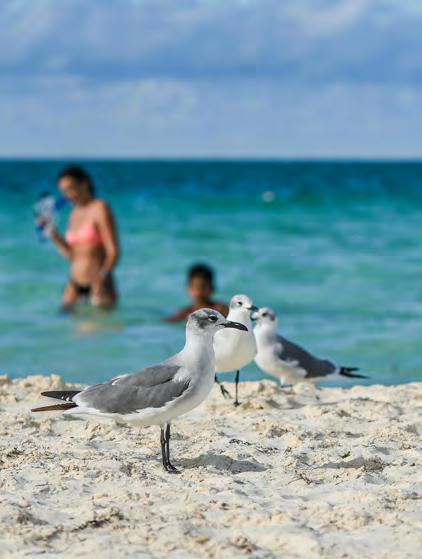
En este sentido, constituye un reservorio genético, debido también a la diversidad biológica representada en insectos, aves, moluscos y reptiles, como iguanas y cocodrilos americanos. De esta forma, el fascinante conjunto insular declarado Reserva Marina, suscita las más intensas sensaciones, ante la oportunidad de convivir con especies casi extintas. Con 82 puntos de inmersión, actividades como el buceo contemplativo, el snorkeling, la fotografía submarina y la pesca recreativa de estilo captura y suelta, encuentran su escenario ideal, acercando a los vacacionistas al pródigo mundo del mar. Asimismo, cuenta con el conjunto de arrecifes coralinos más conservado del entorno caribeño. Complejo, exótico, colorido y variado, resguarda una gran variedad de especies, aquí resalta la presencia de tiburones y el espectáculo que supone bucear en su compañía. De ahí que visitantes ávidos de aventuras, encontrarán un espacio presto a satisfacer sus expectativas de adrenalina y exploración de entornos insospechados. El acceso a este universo azul es netamente por vía marítima, desde el puerto de Júcaro, en Ciego de Ávila. Considerado Zona Bajo Régimen Especial de Uso y Protección, el desarrollo turístico de la región se sustenta en el bajo impacto ambiental correspondiente a la sostenibilidad y ecología que atesora su valor natural, en aras de mantenerlo intacto. Igualmente, instituciones científicas cubanas asociadas al estudio y protección del medio ambiente, despliegan investigaciones y acciones de manejo para la conservación. Ante la vida moderna tan ajetreada, puede resultar necesario alejarse, respirar y reconectar con las esencias. Jardines del Rey y de la Reina devienen en el escape idóneo para los más diversos públicos. Familias, enamorados, aventureros y viajeros individuales, encuentran un amplio espectro de opciones para elegir; alternativas que invitan a explorar, relajarse, recargar energía, experimentar o aventurarse en estos parajes avileños de imponentes playas y cuya naturaleza los convierte en lugares extraordinarios, como pocos hay en el mundo.
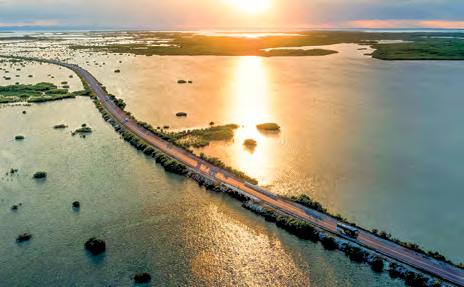
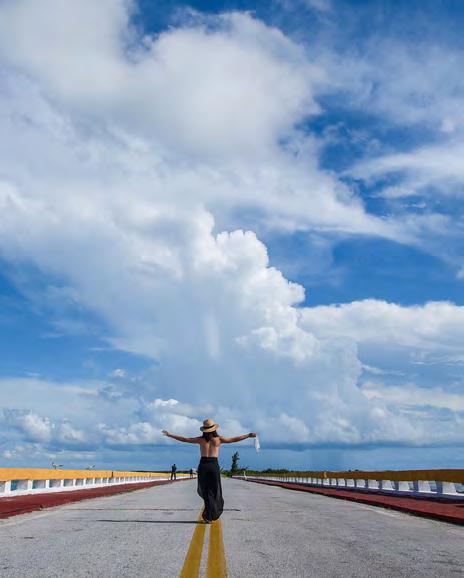
In this sense, it constitutes a genetic reservoir, also due to the biological diversity represented in insects, birds, mollusks and reptiles, such as iguanas and American crocodiles. In this way, the fascinating insular group declared Marine Reserve, arouses the most intense sensations, with the opportunity to coexist with almost extinct species. With 82 immersion points, activities such as contemplative diving, snorkeling, underwater photography and recreational catch-and-release fishing find their ideal setting, bringing vacationers closer to the prodigal world of the sea. It also has the best-preserved coral reefs in the Caribbean. Complex, exotic, colorful and varied, it shelters a great variety of species, here stands out the presence of sharks and the spectacle of diving in their company. Therefore, visitors eager for adventure will find a space ready to satisfy their expectations of adrenaline and exploration of unsuspected environments. Access to this blue universe is by sea, from the port of Júcaro, in Ciego de Avila. Considered a Zone Under Special Regime of Use and Protection, the tourist development of the region is based on the low environmental impact corresponding to the sustainability and ecology that treasures its natural value, in order to keep it intact. Likewise, Cuban scientific institutions associated with the study and protection of the environment, deploy research and management actions for conservation. In the face of a hectic modern life, it may be necessary to get away, breathe and reconnect with the essences. Jardines del Rey and Jardines de la Reina become the ideal escape for the most diverse audiences. Families, lovers, adventurers and individual travelers find a wide range of options to choose from; alternatives that invite you to explore, relax, recharge your energy, experiment or venture into these places with imposing beaches and whose nature makes them extraordinary places, like few others in the world.
